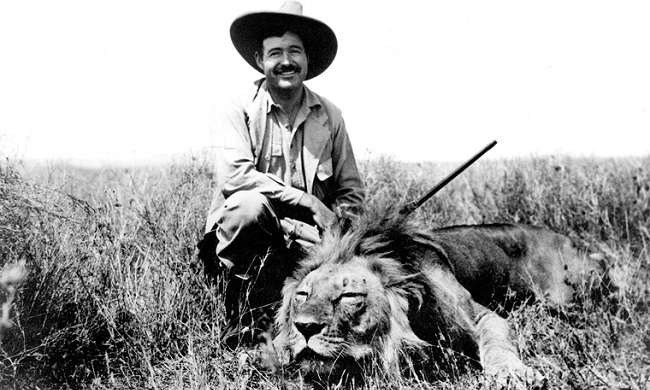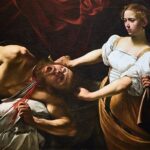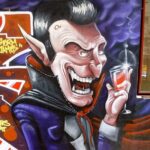
The short story “The Short Happy Life of Francis Macomber” by Ernest Hemingway is a tale of a dangerous hunt in an African wilderness. Behind the entertaining outer layer of this story, there are almost endless possibilities to interpret it with a deeper symbolic layer of cultural, social or even – as it will be demonstrated here – economic phenomenons.
This essay will illustrate how the short story might be construed as an allegory of the pursuit of financial investments and its ensuing risks in Western society.
The Setting
The story’s setting as a whole is a metaphor for the dangerous and unexpected environment of economics. Geographically, the plot is set on some African safari, probably in Kenya, due to Margot’s allusion to Nairobi during the hunt of the buffalo.
The narrator portrays a realistic setting of the safari’s topography, which is naturally very different from the familiar urban topography of the typical Westerner: “[T]hey went down the steep bank and across the stream, climbing over and around the boulders and up the other bank, pulling up by some projecting roots.” In that sense, these sorts of alien surroundings are allegorical to the financial realm – the amateur investor may first find it exotic and enticing on the one hand, but on the other, it is completely foreign and unpredictable.
The story’s setting conveys the sense that it is only familiar and relatively safe for the “professionals.” The suspense is especially noticeable during the event in which the “amateur” Macomber, alongside the experienced hunting group, go together after the injured lion into the perilous tall grass. It suggests that investing newcomers may try to pursue the excitement and monetary temptation of financial opportunities, but ultimately it is chiefly the territory of the experts, who are fully acquainted with its unique economic attributes and hazards. Thus, the setting has as well a functional role in representing the alluring yet risky environment of investments.
The Professional-Amateur Juxtaposition
The characteristic differences between economics specialists and untrained dilettantes are stressed in the story symbolically by the juxtaposition between the attire of Wilson and Macomber. While Wilson wears “old slacks” and “very dirty boots,” Macomber wears the same clothes only “that his [are] new.” In addition, Wilson holds “four big cartridges,” whereas Macomber does not. This shows that Wilson is the seasoned professional with the necessary “tools” for his role, while Wilson just feigns a semblance of professionalism.
This comparison is very prominent throughout an external analepsis – Macomber’s flashback of the hunt of the lion. Immediately after the frightened and anxious Macomber admits to his wife that the lion’s roar is “frightful,” Wilson arrives carrying his “505 Gibbs and grin[s].” The superiority of Wilson over Macomber culminates after the close encounter of the group with the lion: “Macomber, standing by himself in the clearing where he had run, holding a loaded rifle, while two black men and a white man looked back at him in contempt.” This event implies that in the face of a real acute financial crisis, those are mainly the experts who excel, whereas the amateurs fail.
The big characteristic development and ultimate demise of the story’s protagonist, Macomber, is a metaphor for the inept investor.
Macomber and his wife leave for the safari in order to add “more than a spice of adventure” to their lives, similar to how an investing novice seeks some extra capital gains. When Macomber hears the lion for the first time, he gets scared while “[t]here [is] no one to tell he [is] afraid” – feelings of fear and entrapment, which are equivalent to the emotions of a fledgling investor realizing in what sort of complex field he/she is involved in for the first time.
The confrontation of Macomber with the lion is his first serious challenge, in which he utterly fails; this represents the unskilled investor’s initial trial that he will likely lose. The following hunt proves to be successful for Macomber; however, the prey is just “three old bulls,” which shows that even the untrained investor can gain small wins sometimes. The hunt of the three old bulls is what exhilarates Macomber and makes him wholly complacent and overconfident in a way that even Wilson ponders, “Yesterday he’s scared sick and today he’s a ruddy fire eater,” an illustration of how a few small fruitful ventures could make the rookie overly arrogant and haughty.
Macomber’s presumptuous behavior drives him to persist in chasing the injured bull, which eventually leads to his death, a demonstration of how the cocky attitude of the inexperienced investor could cause his/her absolute demise.
The Focalization
A fascinating aspect of the story is the focalization of the omniscient narrator. Throughout the story, a few characters are focalized, which allows deep cognitive privilege into their mind.
In addition to Macomber, Wilson is focalized as well at times. Wilson’s focalization enables the reader to see how he acknowledges his professional superiority over the others: “He [Wilson] had his own standards about the killing and they could live up to them or get some one else to hunt them.” This focalization also illustrates how morally askew Wilson is and how sometimes he knowingly exploits his clients. Wilson admits that he also carries with him “a double size cot” when he goes hunting with clients because occasionally, “the women did not feel they were getting their money’s worth unless they had shared that cot with the white hunter.” This shows that Wilson’s sexual affair with Margot is not just a one-time event and suggests that financial professionals commonly abuse their positions solely for their own selfish gain.
Another fascinating focalization in the story is the lion, which has the functionality of depicting the hunt from the prey’s point of view and exhibits the perspective of investment fraud victims. At first, the lion fails to detect that he is actually the mark of the hunters, and even after he does and attempts to storm at his assailants, he practically has no chance against the armed professionals who chase him. Through the lion’s focalization, the story points out that there are also victims in the investment world who might even be leaders in their respective fields but face very few odds against skilled investment hunters.
By wielding multiple literary devices, as demonstrated here, Hemingway creates a story that could be interpreted on various, almost endless, levels. While this essay explains how the short story is allegorical to the financial investment world, different readers might perceive it otherwise. However, the basic literary notions of the story – the setting as foreign and unpredictable, the characteristic juxtaposition between Wilson and Macomber, the big characteristic development of Macomber, and the functionality of multiple focalizations to depict a variety of points of view – remain the same in each theory.
Just as in the elaborated world of financial investments, even though different people can derive from the story different returns, the fundamental foundations stay equal.



